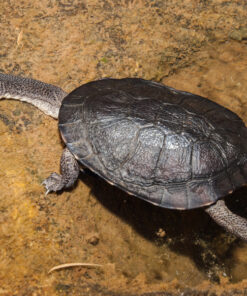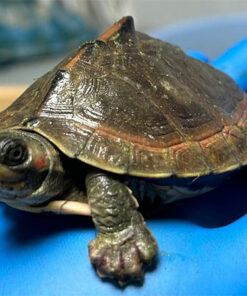$399.00 Original price was: $399.00.$299.00Current price is: $299.00.
Discover a Captive Bred Female Pastel Red Ear Slider Turtle, a Colorful and Desirable Morph, Perfect for Breeding Projects! Feeding on Pellets, Krill, Crickets, and Greens.
Pastel Red Ear Slider Turtle for Sale : A Complete Guide to Owning and Caring for These Unique Turtles
What is a Pastel Red Ear Slider Turtle?
Key Features of the Pastel Red Ear Slider Turtle:
Why Choose a Pastel Red Ear Slider Turtle?
Where to Buy a Pastel Red Ear Slider Turtle
How to Care for a Pastel Red Ear Slider Turtle
Why Buy a Pastel Red Ear Slider Turtle?
FAQs About Pastel Red Ear Slider Turtles
Tips for Extending the Lifespan of Your Pastel Red Ear Slider Turtle
- Proper Habitat
A well-maintained habitat is essential for the health and happiness of your turtle. Pastel red ear sliders, like all red ear sliders, require both aquatic and dry spaces in their enclosure. A large tank with enough swimming room is important, especially as they grow. Additionally, keeping the water clean with proper filtration will help prevent illnesses. Having a well-regulated basking area that mimics their natural environment will allow them to stay active and healthy. - Balanced Diet
Diet plays a huge role in the longevity of your red ear slider turtle. Feeding a variety of nutritious foods, including commercial turtle pellets, leafy greens, and occasional protein sources like insects or fish, will ensure they receive the necessary nutrients. Calcium is especially important for shell health, so providing cuttlebone or a calcium supplement is recommended. Overfeeding can lead to obesity, so monitoring portion sizes and frequency is key. - UVB Lighting
Proper lighting is crucial for turtles, as it helps regulate their metabolism and shell growth. Without adequate UVB exposure, turtles can develop metabolic bone disease, which affects their shells and bones. Make sure your turtle gets at least 10-12 hours of UVB lighting daily to mimic natural sunlight. UVB also assists in vitamin D3 synthesis, which helps the turtle absorb calcium effectively. - Regular Health Monitoring
Regularly observing your turtle’s behavior and appearance will allow you to detect any early signs of illness. Healthy turtles are active, alert, and have bright eyes and a firm, smooth shell. Common signs of illness in turtles include lethargy, breathing difficulties, lack of appetite, or discolored shell patches. If you notice any unusual behavior or symptoms, it’s best to consult a veterinarian who specializes in reptiles. - Temperature and Humidity Regulation
Turtles are ectothermic, meaning they rely on external heat sources to regulate their body temperature. Ensuring that both the water and the basking area are kept at the appropriate temperatures (75-85°F for water and 85-90°F for basking) will help your turtle maintain proper body function. This also helps boost their immune system and digestion.
Enrichment and Mental Stimulation
Providing mental stimulation for your Pastel Red Ear Slider Turtle can significantly enhance their quality of life. Although they may not need toys like dogs or cats, they do benefit from a varied and enriched environment.
- Interactive Decor: Adding elements such as floating logs, rocks, or underwater caves can give your turtle plenty of areas to explore and interact with. These will encourage natural behaviors such as swimming, basking, and hiding.
- Live Plants: If possible, incorporate live aquatic plants into the habitat. Not only do they improve water quality, but they also offer a natural environment for your turtle to navigate and explore. Just ensure the plants you choose are turtle-safe and won’t be harmful if nibbled on.
- Feeding Variety: Incorporating variety into your turtle’s diet not only keeps them healthy but also provides enrichment. Offering food in different forms (such as floating pellets, hanging leafy greens, or occasional live prey like small fish) will engage your turtle’s instincts and keep mealtime interesting.
How long will my pastel red ear slider live?
Common Health Issues and Prevention
Though Pastel Red Ear Slider Turtles are hardy, they can suffer from certain health issues if not properly cared for. Prevention is key to ensuring a long, healthy life for your pet.
- Shell Rot: Shell rot is a bacterial infection that occurs when a turtle’s shell is damaged and exposed to poor water conditions. To prevent shell rot, maintain clean water and ensure your turtle has access to a dry basking area.
- Respiratory Infections: Cold water or improper tank temperatures can lead to respiratory infections, which manifest as wheezing, gasping for air, or frequent yawning. Keeping the water at the correct temperature and ensuring the basking area is warm enough will help prevent this issue.
- Vitamin Deficiency: Lack of proper nutrition can lead to deficiencies, particularly in calcium and vitamin D3. Ensure your turtle is receiving a varied diet, with plenty of leafy greens, protein, and calcium supplementation. UVB lighting is also crucial to help with vitamin D3 absorption.
Conclusion
| Sex | Male, Female |
|---|
Related products
TURTLES FOR SALE
TURTLES FOR SALE
TURTLES FOR SALE
TURTLES FOR SALE
Red Ear Slider Turtle for sale | #1 Best Exotic Pets for Sale
TURTLES FOR SALE
TURTLES FOR SALE
Baby Indian Brown Roofed Turtle for Sale | #1 Best exotic Reptiles























